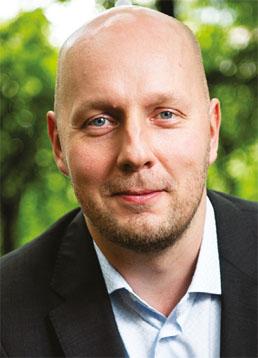The collective bargaining season is slowly and surely approaching, like Christmas in November. Both lutefisk and bargaining goals are being prepared hand in hand. Wishes have been carefully registered and mailed onwards. On the other hand, Christmas and the bargaining also resemble each other in that it will be a mystery until the end what is inside the package.
As we find out in this issue in the article written by Oskari Onninen, the collective agreement of the universities is a special creation. Unlike in many collective agreements on the education sector, the respective university teachers’ and researchers’ collective agreements define many issues related to working time rather loosely. This tends to lead into many local applications and interpretations. A good consensus cannot be reached in many situations.
There is no return to the ancient time of the collective bargaining contract on civil servant salaries with its detailed regulations, and for a good reason; the world has changed. The same is true for the current agreement, where there is room for development in the same way. Development must, however, be understood truly as a collective agreement that aims to correspond to teachers’ and researchers’ job descriptions, not as “deterioration” in a newspeak sense. For example, for someone who teaches at a university, the maximum number of contact teaching hours per academic year can be 394. How can this be developed to correspond to the current reality? By updating the definition? The number? What is contact?
The For Your Benefit Campaign by the Negotiation Organisation for Public Sector Professionals (Juko) will make its members more aware of all the things that have been agreed on in the bargaining agreement. I warmly recommend that everyone will acquaint themselves with the campaign!
On the other hand, there are many things essentially related to work that have not been agreed on in an agreement; they just somehow happen because of the employer’s decision. One of these is the working space where the teacher and the researcher are supposed to do their work. There has traditionally been a relatively similar understanding of this in different universities, even though for doctoral researchers and grant-funded researchers this has been, so to say, complicated even earlier.
Significant plans to save on spaces and the hybridization of teaching constitute a completely new challenge. In the beautiful illustrations of new campus projects, people do very little of what could in traditional terms be called research or teaching. Walls cannot, however, exist only for the purposes of hosting a competitively tendered restaurant, the club rooms of student organizations and shared multipurpose spaces. Instead, one would hope that carrying out the core activities of the university would still be possible on the university premises.
The narrative people vs. walls contains a faulty juxtaposition because walls very strongly define how people can operate in their work: a multipurpose environment is badly suited for the purposes of teaching, guidance, and research.
Campus visions are rarely planned with a large enough number of quiet retreat rooms so that they could enable meaningful encounters. The spaces of cafeteria entrepreneurs and public libraries are illsuited for confidential guidance discussions. In teaching, the bleak university of Remote Finland offers flat interaction on Teams and Zoom as a solution. In public discussions, we can see a significant wish to be a part of a community. For this reason, when walls are being renewed, those people who work within the walls need to be heard and allowed to participate. Listening needs to happen, not just hearing. Consults and architects do what the buyer pays them for, but those who produce the results of universities also need to be heard: teachers, researchers, and students.
Translation: Elina Siltanen

Santeri Palviainen
Chair, The Union for University Teachers and Researchers in Finland, YLL
Painetussa lehdessä sivu 42